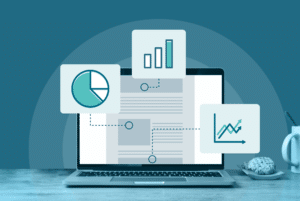
Content-driven link building is a key part of what we do at Aira and we’re always trying to make improvements to our skills, processes and results. There are a few ways that we do this, including team training, processes and looking back at successful (and unsuccessful) campaigns to learn what worked and what could have been improved.
The latter has never been that formal or structured and we want to change that.
We want to use the vast amounts of data that we have to constantly learn more about what works and what doesn’t for our clients. This lets us do two things:
- We can feed the learnings back into our strategy for future campaigns, increasing the chances of success
- We can manage client expectations better because we have a more objective view of what success looks like
We’ve built a system at Aira to record data against every single content campaign that we launch and every single link that we build - there’s a lot! I want to share a few things from it (not all of it, soz) and hope that it helps you increase your success rate. I spoke about this topic at Learn Inbound and you can view the video here:
The data
The first step is to decide what data you want to record against the campaigns and coverage that you build. This will differ for you, but here is a snapshot of the data that we’re gathering.
Campaign data
This could be:
- Client industry (travel, retail, automotive etc)
- Whether the client is B2B or B2C
- How many links, nofollow links and brand mention the campaign generated
- The content format we used for the execution
- Whether data played a part on the campaign or not
- Whether the execution was a full-page takeover or not
We have a few more but the above gives you a general idea of what data we’re gathering.
Coverage data
When it comes to link data, we’re talking about the page where the client received the coverage. Sometimes this will be coverage that we asked for and sometimes it will be natural pickup i.e. someone has seen the content and decided to cover the campaign without us asking. Either way, we track every link and add the following data points:
- Date the link went live
- The industry of the publication
- Author name, if available
- Title used by the author
- Domain Authority
- Whether the coverage is a link, a nofollow link or a brand mention
Again, we record a few other things too, some of which are automated and some require manual checks.
Our system is a relatively simple, but very big Google Spreadsheet which lists all of this data. This is a good place to start because it lets you understand whether the data is going to be useful or not before you commit to building something more robust and scalable.
Our current Google Sheet includes the following:
- 300+ client campaigns
- 8,000 pieces of coverage
- 30 clients
- Four years of data
All of this data across a range of client campaigns and many pieces of coverage allows us to start seeing trends and patterns which we can learn from.
Before I get into these trends and patterns, let’s go back a step.
Where all of this started
Our team did an exercise where they mapped out a bunch of our campaigns onto a graph which had two axis:
- How successful the campaign was
- How complex the campaign was to create
It started out as a whiteboard sketch but to illustrate the point, here is a mocked-up version:
Each dot represents a content campaign and where things get interesting is looking at the campaigns which are in the top right quadrant - successful and not complex. Something being successful and complex isn’t terrible, but these can require more resources and budget from the client and may take more time to hit their link target.
When we went through this exercise, we could start to see patterns in the types of campaigns that sat in each quadrant. One particular pattern emerged in the top right quadrant which we had previously talked about, but could now confirm. We then fed this back into our team and the ideation process knowing that a particular content format worked better than others.
We then realised that we should be doing this at scale across as many campaigns and links that we could. We all had subjective views on what worked and what didn’t, but they were subjective - this new system could give us an objective view too.
This led to a lot of work to gather all of the data, but now that we have it, it’s relatively easy to maintain and update.
So what trends and patterns are we seeing? Let’s take a look.
The trends
One quick caveat here - these trends are from our own team and our own clients. They may well be different for your team and clients. That’s kinda the point - you need to find the trends and learnings of your own team.
Which content format performs best?
Our data shows us that interactive content performs better in terms of the average amount of coverage generated. This probably isn’t that surprising, given that interactive content is flashier, shinier and can get more attention. However, they don’t perform that much better than static infographics, in fact, they only secure about 10% more coverage:

- Web development
- Cross-browser and cross-device testing
- Extra time on responsive designs
- Upload time to the client website and subsequent testing
Therefore, the question becomes, even if interactive content gets more coverage, is it worth it for a 10% uplift in coverage?
The answer will differ based on the client, but my view is that a project should include multiple types of content format and you shouldn’t gamble on just one type. The variation in itself reduces risk, but you should lean toward the formats that work best.
A quick side note here is to mention our content strategy framework makes us consider and balance different formats. Here is how it looks:
And here is how a filled-out version can look, using the example of a website who sell products to help you sleep better:
As you can see, our formats vary a lot and mean that we don't just "default" to interactive formats.
Does data visualization work?
We use a lot of data in our content pieces and this data can take a lot of time to gather, process, interpret and validate. This can add a lot more time to the project, is it worth it? Does it get more coverage?
The short answer is yes. A content campaign that uses data visualisation will, on average, get more coverage than a piece which doesn’t use data visualisation. To illustrate the kind of content we mean, here is one example from a client where we gathered data on the ingredients that go into protein bars and visualised it:

The team can use this as a shortcut to seeing what types of data visualisation work best.
Do full-page takeovers work?
If you’ve ever worked on a project that requires the client’s developers to upload content to their website, you’ll know how painful it can be. Of course, there are exceptions, we have some clients where it’s done super fast and with no issues. Other times, we’re stuck in a long development queue and end up with bugs.
So the question here is - is it worth this hassle and extra work? Or should you use an existing page template from your client’s CMS despite the fact that this restricts your design?
As you can see, they typically generate more coverage than content pieces that sit within an existing template.
This not only helps us understand that the extra work is worth it, but it also helps us justify the extra development resource that the client needs to use in order to support full-page takeovers. Next time we’re asked by a client’s development team why we can’t use an existing template, we can show them this data.
Is B2B harder than B2C?
It’s a commonly held belief that link building and content campaigns for B2B focused companies is harder than B2C ones. B2B industries can often be labelled as “too small” or “boring” from a link building perspective.
But what does the data say?
Well, the data is agreeing with perception. On average, we get double the amount of coverage for a B2C client compared to a B2B one.
But that’s not where the takeaways end here. The graph above shows the total amount of coverage which includes links, nofollow links and brand mentions.
Look what happens if we segment data to only show links:
The trend continues - the average B2C campaign still gets more links, but the gap is much closer. What we’re seeing here is that on average, nofollow links and mentions are far more common for B2C clients than B2B. The data is telling us that on average, nine out of ten pieces of coverage for a B2B client will result in links. That’s a much better ratio than B2C.
Are nofollow links becoming more common?
Nofollow links are hard to avoid. While our goal is to secure links to clients that will lead to improvements in rankings and traffic, occasionally, these links will be tagged with nofollow, meaning that Google shouldn’t count them in their link graph because they don’t pass PageRank. This stance softened slightly in September 2019 when Google announced some changes to how nofollow worked, along with some new, more granular options for marking links. They included this statement:
"All the link attributes -- sponsored, UGC and nofollow -- are treated as hints about which links to consider or exclude within Search. We’ll use these hints -- along with other signals -- as a way to better understand how to appropriately analyze and use links within our systems."
This seemed to confirm what some SEOs had long suspected - Google may count nofollow links in some circumstances. Our link building industry survey in 2020 had one question pointed directly at this change and we asked over 350 SEOs to what extent they agreed with the following statement:
Google’s launch of rel=sponsored, rel=ugc is an attempt to recapture link graph data in response to many high tier sites no-following editorial links
The majority (65%) either agreed or strongly agreed with this statement. A combined 6% either disagreed or strongly disagreed.
In addition, Google confirmed that from March 2020, links marked with the nofollow attribute may be used as hints for crawling and indexing purposes i.e. they wouldn't necessarily ignore a link completely if it was a nofollow.
But what does the data say in terms of link building results? Are they becoming more common? The following graph shows a breakdown of the overall coverage we have secured over the last three years, with links, nofollow links and brand mentions shown as a percentage:
It’s clear to see that links as a proportion of overall coverage are indeed dropping, but nofollow isn’t the cause. It appears that brand mentions are becoming more common which is not only interesting but also reassuring. It is far easier to change a brand mention to a link than it is to remove the nofollow tag from a link!
How do industries compare to each other?
Finally, are some industries harder than others? Again, there can be common perceptions of some industries being more difficult than others. One such perception is that the travel industry is hard because of the prominence of bloggers who charge for links to brands.
What does the data say?

There is a reason that we do well in these industries - we work with a number of clients in each one and have done for a few years. This means that we’ve had the time and freedom to build up our knowledge of the industry and of course, build up key contacts who we can call upon for coverage and feedback on ideas.
In our view, it’s less about the industry and more about your knowledge and experience of that industry.
Conclusion
That’s about it for now. Hopefully, the trends above are useful and that you will start recording data against your own content campaigns and links.
If you have a similar experience or if you see very different trends in your own data, please do tweet me and let me know.














